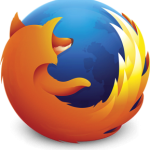 The Firefox browser is open source software, so it’s free, and there are versions that work on either Windows or Linux.
The Firefox browser is open source software, so it’s free, and there are versions that work on either Windows or Linux.
Firefox comes packaged with Fedora, as well as most other versions of Linux, so Linux-users should already be covered.
For Windows-users, you can download the latest version of Firefox from the Mozilla website.
Once the setup file is downloaded, simply double-click the file, and follow up by clicking: Yes. Next. Next. Install. Finish.
That’s all it takes to install Firefox 33. Simple, right?
The simplicity does not end there.
Browser Components

Today, in preparation for next week (which is when we will begin to discuss Firefox customizations), we’re going to go over some basic components that make up the Firefox – or any other – browser.
![]()
Title Bar: The title bar is not browser-specific; it displays the title of the program (in this case, Firefox) and the name of the current file/website/etc. Firefox now hides the title bar by default (to save space), but it can be recovered.
![]()
Menu Bar: The menu bar is not browser-specific; it provides drop-down menu access to standard application (program) functions. Firefox now hides the menu bar by default (to save space), but it can be recovered.
![]()
Tab Bar: The tab bar shows your open browser tabs. The plus sign allows you to open a new tab, and you can drag tabs around to re-arrange their order.
![]()
Address Bar: Alternatively known as the location bar, or URL bar, this field is where you can see the URL of the current website, or enter a new website URL to visit.
![]()
Search Field: This field is like a search engine shortcut; it will send your text to the default or selected search engine for results.
![]()
Browser Buttons: The Back/Forward/Stop/Refresh/Home buttons are used to navigate through web pages and control their progress and status.
Status Bar: The Firefox status bar no longer shows up in Firefox as a fixed bar. Instead, when you hover over a link, the URL that the link leads to will show up at the bottom of the browser window.
Bookmarks (Favorites): Bookmarks are saved links, to web pages that you want to visit again.
Bookmarks Toolbar: The optional bookmark toolbar can be enabled to make your favorite bookmarks even more accessible, by making them visible at all times as a toolbar in the browser window.
Downloads: Firefox allows you to check the progress of downloading files and keeps a record of previously downloaded files also.
History: Firefox keeps track of the web pages that you visit, so that you can access them as history at a later date.
Join me next week, to learn how to access and customize options for these browser components.
